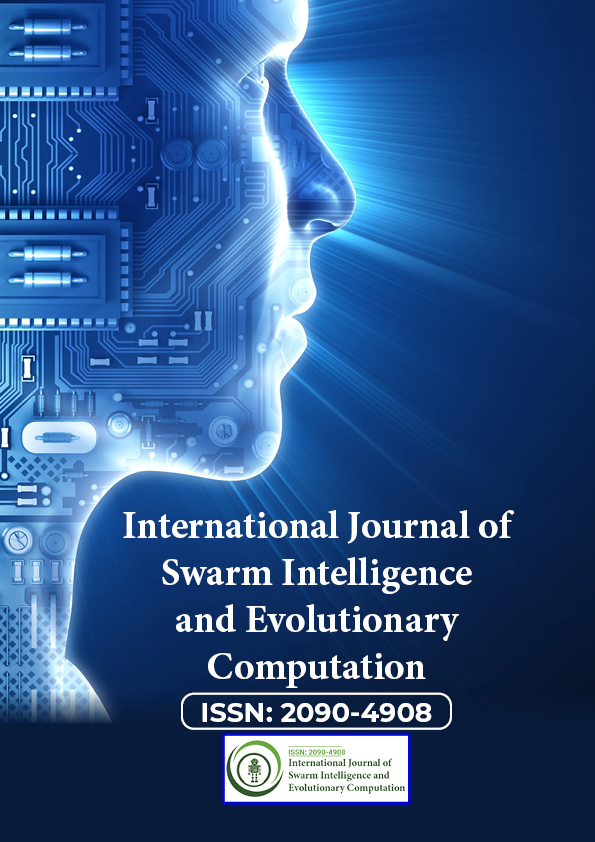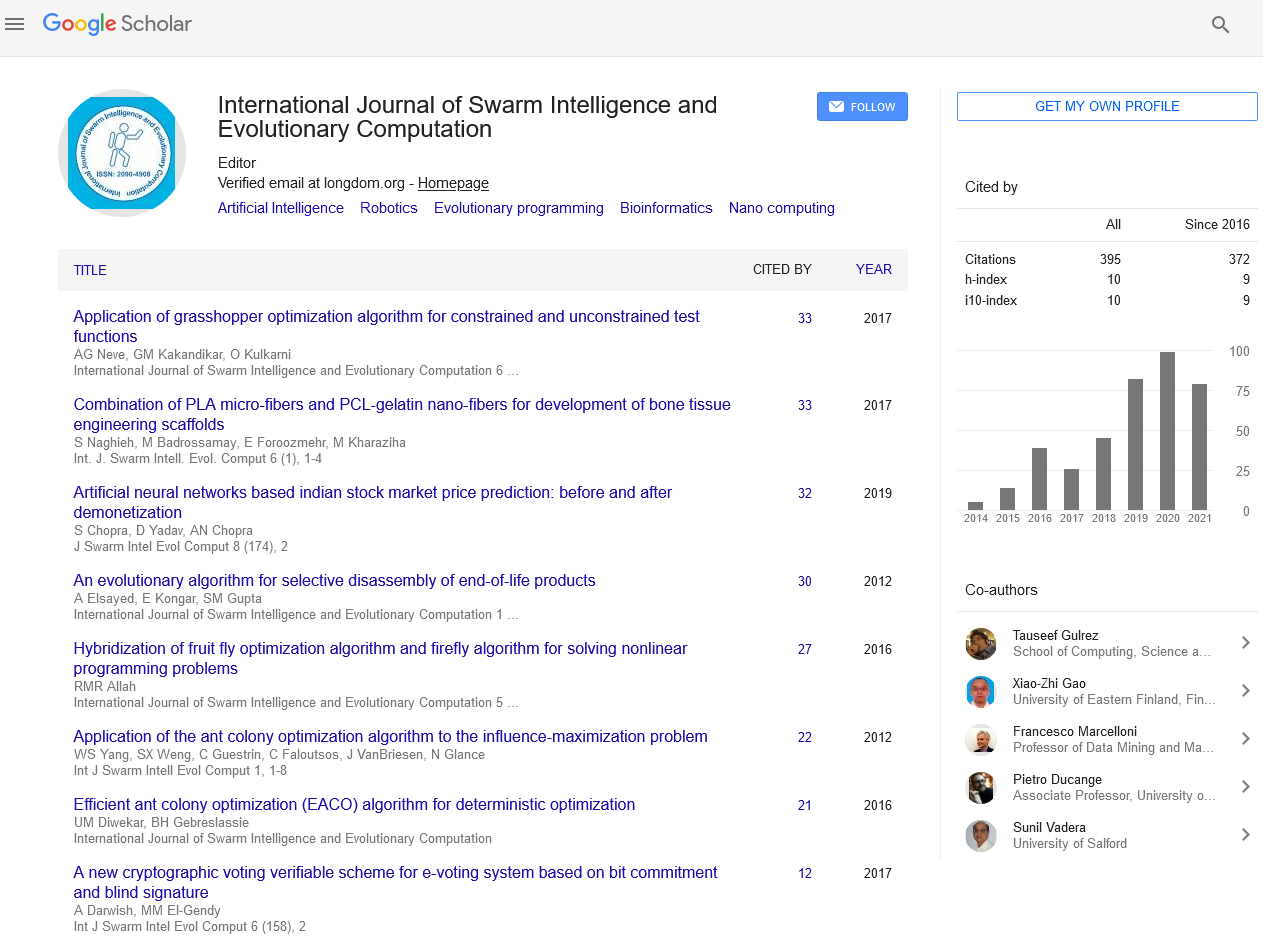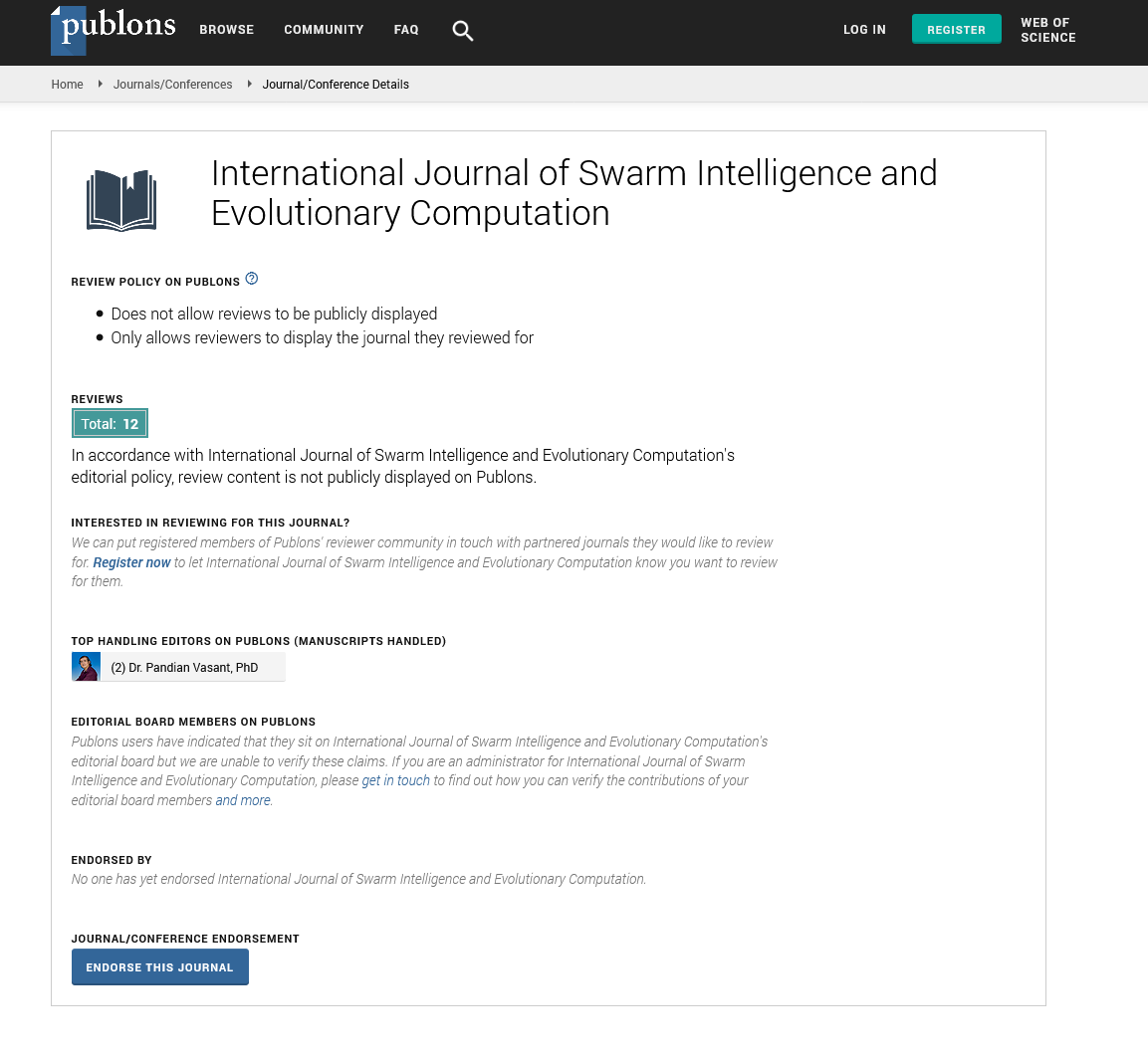Indexed In
- Genamics JournalSeek
- RefSeek
- Hamdard University
- EBSCO A-Z
- OCLC- WorldCat
- Publons
- Euro Pub
- Google Scholar
Useful Links
Share This Page
Journal Flyer

Open Access Journals
- Agri and Aquaculture
- Biochemistry
- Bioinformatics & Systems Biology
- Business & Management
- Chemistry
- Clinical Sciences
- Engineering
- Food & Nutrition
- General Science
- Genetics & Molecular Biology
- Immunology & Microbiology
- Medical Sciences
- Neuroscience & Psychology
- Nursing & Health Care
- Pharmaceutical Sciences
Perspective - (2022) Volume 11, Issue 6
Modern Evolutionary Programming and its Applications
Dheeraj Singhal*Received: 01-Jun-2022, Manuscript No. SIEC-22-17482; Editor assigned: 03-Jun-2022, Pre QC No. SIEC-22-17482(PQ); Reviewed: 24-Jun-2022, QC No. SIEC-22-17482; Revised: 04-Jul-2022, Manuscript No. SIEC-22-17482(R); Published: 14-Jul-2022, DOI: 10.35248/2090-4908.22.11.258
Description
Evolutionary programming is related to genetic programming in that the structure of the programme to be optimised is fixed while its numerical parameters are allowed to vary. Lawrence J. Fogel invented it in the United States in 1960 to use simulated evolution as a learning method to produce artificial intelligence. Fogel evolved finite-state machines as predictors. Currently, evolutionary programming is a broad evolutionary computing dialect with no fixed structure or (representation), in contrast to some other languages. It has grown more difficult to discern from evolutionary strategies.
Evolutionary programming is a simulation method that has been studied for over 30 years. The evolutionary programming and its link to other evolutionary computation approaches, notably genetic algorithms and evolution strategies. The initial attempts that created finite state machines for predicting arbitrary time series are discussed, as are specific contemporary efforts in combinatorial and continuous optimization. Some active research fields are discussed, such as empirical evaluation of the technique's optimization performance and method extensions to include mechanisms to self-adapt to the error surface being searched.
At the time, artificial intelligence research was focused on two areas: modelling the human brain or "neural networks" and modelling the problem-solving behaviour of human experts or "heuristic programming". The former focused on creating mathematical models of neurons and their connectivity, but little was understood about how the brain actually worked at the time. The latter method began with search-based approaches and was later joined by knowledge-based or "expert system" approaches. The heuristic technique necessitates knowledge of the problem domain as well as some level of competence. Both aimed to imitate humans, the most sophisticated intellectual entity produced by evolution.
In the 1980s, evolutionary programming was extended to employ arbitrary data representations and to be used to generalised optimization problems. Data structures such as real-valued vectors, permutations, variable-length vectors, binary strings, and so on were subjected to the same general process of populationbased random variation and selection.
Applications of evolutionary Programming
Natural evolution inspired evolutionary programming, which is a potent problem solver. It simulates the key features of biological evolution and investigates the solution space through gene inheritance, mutation, and selection of the best candidate solutions. Genetic algorithms, evolutionary methods, genetic programming, particle swarm optimization, ant colony optimization, artificial immune systems, estimation of distribution algorithms, differential evolution, and memetic algorithms are all dialects of evolutionary algorithms. These evolutionary methods have demonstrated their effectiveness on a variety of difficult and complex optimization tasks.
Evolutionary programming has been used to solve a wide range of engineering problems, including traffic routing and planning, pharmaceutical design, epidemiology, cancer detection, military planning, control systems, system identification, signal processing, power engineering, and game learning, to name a few. Evolutionary programming can be used in any of the fields where evolutionary algorithms are used.
In the early 1990s, one of the main directions of research in evolutionary computation was evolutionary programming, which included genetic algorithms as well as genetic programming and evolution strategies.
Many applications have made use of evolutionary programming. It has been used to generate adaptive behaviour in a platoonlevel tank engagement where one platoon's mission is changed on the fly, to evolve a checkers player who attained master level over time while competing against human players in an online checkers game room, and for a variety of other interesting and important applications.
Conclusion
Evolutionary Programming (EP) is a stochastic optimization method similar to Genetic Algorithms (GA) that focuses on the behavioural linkage between parents and offspring rather than attempting to imitate specific genetic operators observed in nature. Although the two methodologies emerged independently, EP is similar to Evolutionary Strategies (ES).
Evolutionary Programming is a valuable optimization approach when other techniques, such as gradient descent or direct analytical discovery, are not possible. Combinatorial and realvalued function optimization is well suited for Evolutionary Programming because the optimization surface or fitness landscape is "rugged," with many locally optimal solutions.
Citation: Singhal D (2022) Modern Evolutionary Programming and its Applications. Int J Swarm Evol Comput. 11:258.
Copyright: © 2022 Singhal D. This is an open-access article distributed under the terms of the Creative Commons Attribution License, which permits unrestricted use, distribution, and reproduction in any medium, provided the original author and source are credited.


